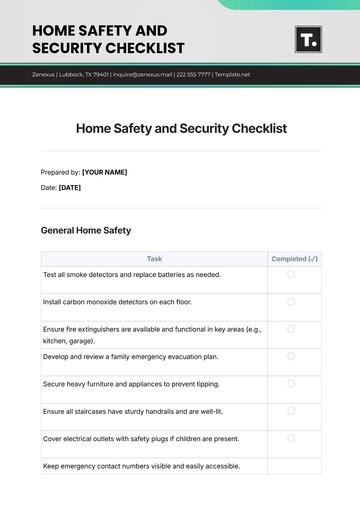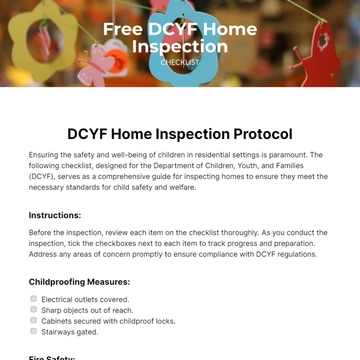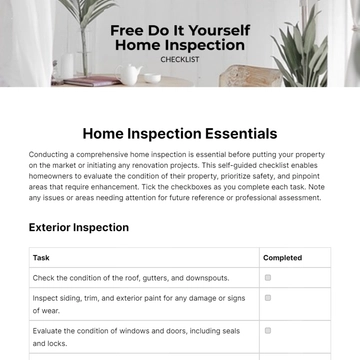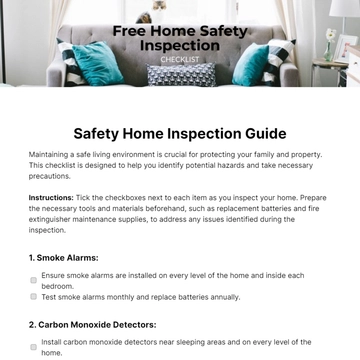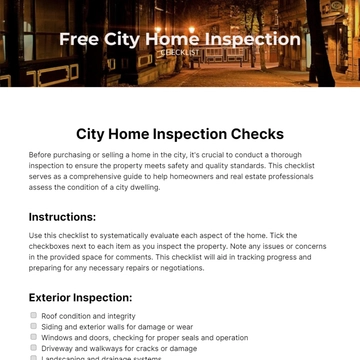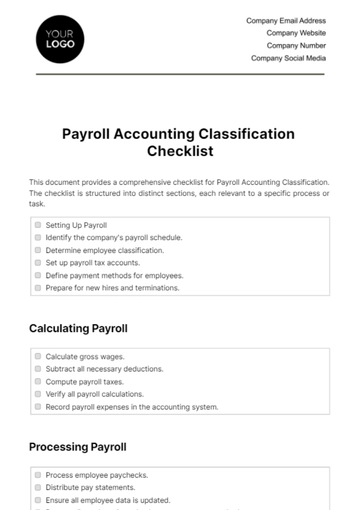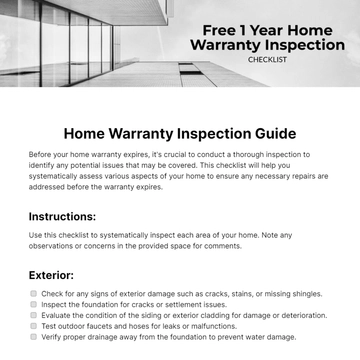Free Condominium Home Inspection Checklist

Conducting a thorough inspection of a condominium unit is crucial for potential buyers or current owners seeking to ensure the property's safety, functionality, and value. This checklist outlines key areas to examine during a condominium home inspection. Tailor this according to your home inspection preferences.
Company: | [Your Company Name] |
Inspector: | [Your Name] |
Inspection Date: | [Date] |
Property: | [Property Name] |
Address: | [Property Address] |
Exterior:
Inspect the condition of the building's exterior walls, looking for cracks, water damage, or signs of deterioration.
Check for proper drainage systems, including gutters and downspouts, to prevent water accumulation and potential structural damage.
Evaluate the condition of windows and doors for proper sealing, functionality, and any signs of damage or wear.
Interior:
Assess the overall condition of walls, floors, and ceilings for cracks, stains, or signs of water damage.
Test all light switches, outlets, and fixtures to ensure they are functioning correctly and safely.
Inspect the HVAC system, including air filters, vents, and thermostat operation, to ensure proper functionality and maintenance.
Check for any signs of pests, such as rodents or insects, and assess the need for pest control measures.
Kitchen:
Inspect appliances (oven, stove, refrigerator, dishwasher) for proper functioning and signs of wear or damage.
Check plumbing fixtures, including sinks, faucets, and garbage disposal, for leaks or signs of corrosion.
Evaluate the condition of countertops, cabinets, and backsplashes for damage or deterioration.
Bathroom(s):
Test plumbing fixtures, including sinks, toilets, showers, and tubs, for leaks, proper drainage, and functionality.
Inspect the condition of tiles, grout, and caulking in showers and around sinks for signs of water damage or mold growth.
Check ventilation systems to ensure proper airflow and prevent moisture buildup.
Utilities:
Inspect electrical panels, wiring, and outlets for any signs of damage, overloading, or safety hazards.
Test smoke detectors and carbon monoxide alarms to ensure they are operational and up to date.
Check the condition of water heaters and verify proper installation and functioning.
Safety and Security:
Assess the condition and operation of locks, deadbolts, and security systems to ensure the safety of the unit.
Verify the presence of fire extinguishers and emergency exits and assess their accessibility and functionality.
- 100% Customizable, free editor
- Access 1 Million+ Templates, photo’s & graphics
- Download or share as a template
- Click and replace photos, graphics, text, backgrounds
- Resize, crop, AI write & more
- Access advanced editor
Conduct comprehensive inspections of condominium units with Template.net's Condominium Home Inspection Checklist. This template is tailored to address the unique considerations of condo living, from common areas to unit-specific features. Utilize our AI editor tool to customize the checklist according to the condominium association's guidelines and your inspection priorities, ensuring informed decisions.
You may also like
- Cleaning Checklist
- Daily Checklist
- Travel Checklist
- Self Care Checklist
- Risk Assessment Checklist
- Onboarding Checklist
- Quality Checklist
- Compliance Checklist
- Audit Checklist
- Registry Checklist
- HR Checklist
- Restaurant Checklist
- Checklist Layout
- Creative Checklist
- Sales Checklist
- Construction Checklist
- Task Checklist
- Professional Checklist
- Hotel Checklist
- Employee Checklist
- Moving Checklist
- Marketing Checklist
- Accounting Checklist
- Camping Checklist
- Packing Checklist
- Real Estate Checklist
- Cleaning Checklist Service
- New Employee Checklist
- Food Checklist
- Home Inspection Checklist
- Advertising Checklist
- Event Checklist
- SEO Checklist
- Assessment Checklist
- Inspection Checklist
- Baby Registry Checklist
- Induction Checklist
- Employee Training Checklist
- Medical Checklist
- Safety Checklist
- Site Checklist
- Job Checklist
- Service Checklist
- Nanny Checklist
- Building Checklist
- Work Checklist
- Office Checklist
- Training Checklist
- Website Checklist
- IT and Software Checklist
- Performance Checklist
- Project Checklist
- Startup Checklist
- Education Checklist
- Home Checklist
- School Checklist
- Maintenance Checklist
- Planning Checklist
- Manager Checklist
- Wedding Checklist
- Vehicle Checklist
- Travel Agency Checklist
- Vehicle Inspection Checklist
- Interior Design Checklist
- Backpacking Checklist
- Business Checklist
- Legal Checklist
- Nursing Home Checklist
- Weekly Checklist
- Recruitment Checklist
- Salon Checklist
- Baby Checklist
- Equipment Checklist
- Trade Show Checklist
- Party Checklist
- Hospital Bag Checklist
- Evaluation Checklist
- Agency Checklist
- First Apartment Checklist
- Hiring Checklist
- Opening Checklist
- Small Business Checklist
- Rental Checklist
- College Dorm Checklist
- New Puppy Checklist
- University Checklist
- Building Maintenance Checklist
- Work From Home Checklist
- Student Checklist
- Application Checklist
